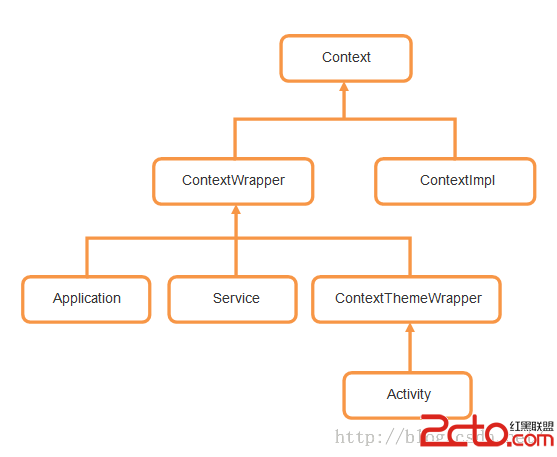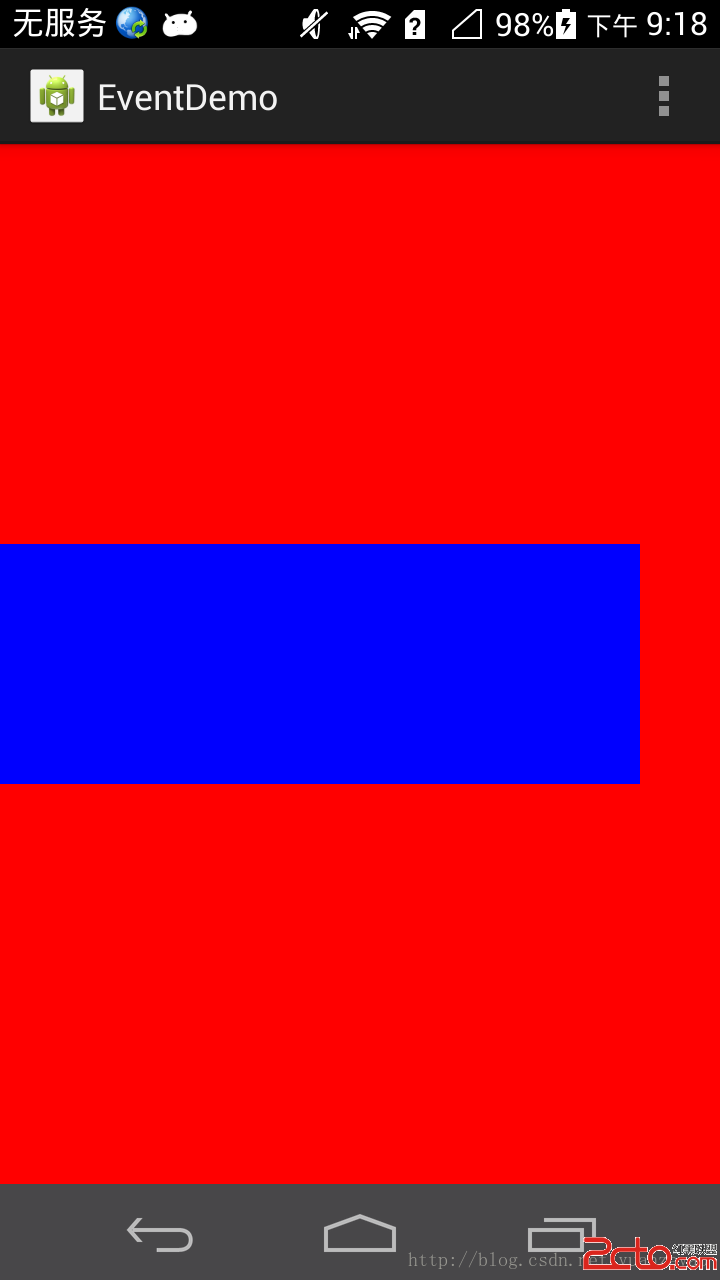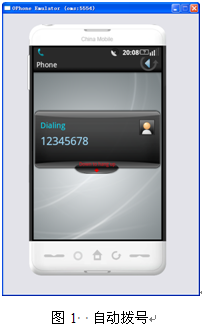在APP應用中,listview的異步加載圖片方式能夠帶來很好的用戶體驗,同時也是考量程序性能的一個重要指標。關於listview的異步加載,網上其實很多示例了,中心思想都差不多,不過很多版本或是有bug,或是有性能問題有待優化。有鑒於此,本人在網上找了個相對理想的版本並在此基礎上進行改造,下面就讓在下闡述其原理以探索個中奧秘,與諸君共賞…
貼張效果圖先:
異步加載圖片基本思想:
1.先從內存緩存中獲取圖片顯示(內存緩沖)
2.獲取不到的話從SD卡裡獲取(SD卡緩沖)
3.都獲取不到的話從網絡下載圖片並保存到SD卡同時加入內存並顯示(視情況看是否要顯示)
OK,先上adapter的代碼:
復制代碼 代碼如下:
public class LoaderAdapter extends BaseAdapter{
private static final String TAG = "LoaderAdapter";
private boolean mBusy = false;
public void setFlagBusy(boolean busy) {
this.mBusy = busy;
}
private ImageLoader mImageLoader;
private int mCount;
private Context mContext;
private String[] urlArrays;
public LoaderAdapter(int count, Context context, String []url) {
this.mCount = count;
this.mContext = context;
urlArrays = url;
mImageLoader = new ImageLoader(context);
}
public ImageLoader getImageLoader(){
return mImageLoader;
}
@Override
public int getCount() {
return mCount;
}
@Override
public Object getItem(int position) {
return position;
}
@Override
public long getItemId(int position) {
return position;
}
@Override
public View getView(int position, View convertView, ViewGroup parent) {
ViewHolder viewHolder = null;
if (convertView == null) {
convertView = LayoutInflater.from(mContext).inflate(
R.layout.list_item, null);
viewHolder = new ViewHolder();
viewHolder.mTextView = (TextView) convertView
.findViewById(R.id.tv_tips);
viewHolder.mImageView = (ImageView) convertView
.findViewById(R.id.iv_image);
convertView.setTag(viewHolder);
} else {
viewHolder = (ViewHolder) convertView.getTag();
}
String url = "";
url = urlArrays[position % urlArrays.length];
viewHolder.mImageView.setImageResource(R.drawable.ic_launcher);
if (!mBusy) {
mImageLoader.DisplayImage(url, viewHolder.mImageView, false);
viewHolder.mTextView.setText("--" + position
+ "--IDLE ||TOUCH_SCROLL");
} else {
mImageLoader.DisplayImage(url, viewHolder.mImageView, true);
viewHolder.mTextView.setText("--" + position + "--FLING");
}
return convertView;
}
static class ViewHolder {
TextView mTextView;
ImageView mImageView;
}
}
關鍵代碼是ImageLoader的DisplayImage方法,再看ImageLoader的實現
復制代碼 代碼如下:
public class ImageLoader {
private MemoryCache memoryCache = new MemoryCache();
private AbstractFileCache fileCache;
private Map<ImageView, String> imageViews = Collections
.synchronizedMap(new WeakHashMap<ImageView, String>());
// 線程池
private ExecutorService executorService;
public ImageLoader(Context context) {
fileCache = new FileCache(context);
executorService = Executors.newFixedThreadPool(5);
}
// 最主要的方法
public void DisplayImage(String url, ImageView imageView, boolean isLoadOnlyFromCache) {
imageViews.put(imageView, url);
// 先從內存緩存中查找
Bitmap bitmap = memoryCache.get(url);
if (bitmap != null)
imageView.setImageBitmap(bitmap);
else if (!isLoadOnlyFromCache){
// 若沒有的話則開啟新線程加載圖片
queuePhoto(url, imageView);
}
}
private void queuePhoto(String url, ImageView imageView) {
PhotoToLoad p = new PhotoToLoad(url, imageView);
executorService.submit(new PhotosLoader(p));
}
private Bitmap getBitmap(String url) {
File f = fileCache.getFile(url);
// 先從文件緩存中查找是否有
Bitmap b = null;
if (f != null && f.exists()){
b = decodeFile(f);
}
if (b != null){
return b;
}
// 最後從指定的url中下載圖片
try {
Bitmap bitmap = null;
URL imageUrl = new URL(url);
HttpURLConnection conn = (HttpURLConnection) imageUrl
.openConnection();
conn.setConnectTimeout(30000);
conn.setReadTimeout(30000);
conn.setInstanceFollowRedirects(true);
InputStream is = conn.getInputStream();
OutputStream os = new FileOutputStream(f);
CopyStream(is, os);
os.close();
bitmap = decodeFile(f);
return bitmap;
} catch (Exception ex) {
Log.e("", "getBitmap catch Exception...\nmessage = " + ex.getMessage());
return null;
}
}
// decode這個圖片並且按比例縮放以減少內存消耗,虛擬機對每張圖片的緩存大小也是有限制的
private Bitmap decodeFile(File f) {
try {
// decode image size
BitmapFactory.Options o = new BitmapFactory.Options();
o.inJustDecodeBounds = true;
BitmapFactory.decodeStream(new FileInputStream(f), null, o);
// Find the correct scale value. It should be the power of 2.
final int REQUIRED_SIZE = 100;
int width_tmp = o.outWidth, height_tmp = o.outHeight;
int scale = 1;
while (true) {
if (width_tmp / 2 < REQUIRED_SIZE
|| height_tmp / 2 < REQUIRED_SIZE)
break;
width_tmp /= 2;
height_tmp /= 2;
scale *= 2;
}
// decode with inSampleSize
BitmapFactory.Options o2 = new BitmapFactory.Options();
o2.inSampleSize = scale;
return BitmapFactory.decodeStream(new FileInputStream(f), null, o2);
} catch (FileNotFoundException e) {
}
return null;
}
// Task for the queue
private class PhotoToLoad {
public String url;
public ImageView imageView;
public PhotoToLoad(String u, ImageView i) {
url = u;
imageView = i;
}
}
class PhotosLoader implements Runnable {
PhotoToLoad photoToLoad;
PhotosLoader(PhotoToLoad photoToLoad) {
this.photoToLoad = photoToLoad;
}
@Override
public void run() {
if (imageViewReused(photoToLoad))
return;
Bitmap bmp = getBitmap(photoToLoad.url);
memoryCache.put(photoToLoad.url, bmp);
if (imageViewReused(photoToLoad))
return;
BitmapDisplayer bd = new BitmapDisplayer(bmp, photoToLoad);
// 更新的操作放在UI線程中
Activity a = (Activity) photoToLoad.imageView.getContext();
a.runOnUiThread(bd);
}
}
/**
* 防止圖片錯位
*
* @param photoToLoad
* @return
*/
boolean imageViewReused(PhotoToLoad photoToLoad) {
String tag = imageViews.get(photoToLoad.imageView);
if (tag == null || !tag.equals(photoToLoad.url))
return true;
return false;
}
// 用於在UI線程中更新界面
class BitmapDisplayer implements Runnable {
Bitmap bitmap;
PhotoToLoad photoToLoad;
public BitmapDisplayer(Bitmap b, PhotoToLoad p) {
bitmap = b;
photoToLoad = p;
}
public void run() {
if (imageViewReused(photoToLoad))
return;
if (bitmap != null)
photoToLoad.imageView.setImageBitmap(bitmap);
}
}
public void clearCache() {
memoryCache.clear();
fileCache.clear();
}
public static void CopyStream(InputStream is, OutputStream os) {
final int buffer_size = 1024;
try {
byte[] bytes = new byte[buffer_size];
for (;;) {
int count = is.read(bytes, 0, buffer_size);
if (count == -1)
break;
os.write(bytes, 0, count);
}
} catch (Exception ex) {
Log.e("", "CopyStream catch Exception...");
}
}
}
先從內存中加載,沒有則開啟線程從SD卡或網絡中獲取,這裡注意從SD卡獲取圖片是放在子線程裡執行的,否則快速滑屏的話會不夠流暢,這是優化一。於此同時,在adapter裡有個busy變量,表示listview是否處於滑動狀態,如果是滑動狀態則僅從內存中獲取圖片,沒有的話無需再開啟線程去外存或網絡獲取圖片,這是優化二。ImageLoader裡的線程使用了線程池,從而避免了過多線程頻繁創建和銷毀,有的童鞋每次總是new一個線程去執行這是非常不可取的,好一點的用的AsyncTask類,其實內部也是用到了線程池。在從網絡獲取圖片時,先是將其保存到sd卡,然後再加載到內存,這麼做的好處是在加載到內存時可以做個壓縮處理,以減少圖片所占內存,這是優化三。
而圖片錯位問題的本質源於我們的listview使用了緩存convertView,假設一種場景,一個listview一屏顯示九個item,那麼在拉出第十個item的時候,事實上該item是重復使用了第一個item,也就是說在第一個item從網絡中下載圖片並最終要顯示的時候其實該item已經不在當前顯示區域內了,此時顯示的後果將是在可能在第十個item上輸出圖像,這就導致了圖片錯位的問題。所以解決之道在於可見則顯示,不可見則不顯示。在ImageLoader裡有個imageViews的map對象,就是用於保存當前顯示區域圖像對應的url集,在顯示前判斷處理一下即可。
下面再說下內存緩沖機制,本例采用的是LRU算法,先看看MemoryCache的實現
復制代碼 代碼如下:
public class MemoryCache {
private static final String TAG = "MemoryCache";
// 放入緩存時是個同步操作
// LinkedHashMap構造方法的最後一個參數true代表這個map裡的元素將按照最近使用次數由少到多排列,即LRU
// 這樣的好處是如果要將緩存中的元素替換,則先遍歷出最近最少使用的元素來替換以提高效率
private Map<String, Bitmap> cache = Collections
.synchronizedMap(new LinkedHashMap<String, Bitmap>(10, 1.5f, true));
// 緩存中圖片所占用的字節,初始0,將通過此變量嚴格控制緩存所占用的堆內存
private long size = 0;// current allocated size
// 緩存只能占用的最大堆內存
private long limit = 1000000;// max memory in bytes
public MemoryCache() {
// use 25% of available heap size
setLimit(Runtime.getRuntime().maxMemory() / 10);
}
public void setLimit(long new_limit) {
limit = new_limit;
Log.i(TAG, "MemoryCache will use up to " + limit / 1024. / 1024. + "MB");
}
public Bitmap get(String id) {
try {
if (!cache.containsKey(id))
return null;
return cache.get(id);
} catch (NullPointerException ex) {
return null;
}
}
public void put(String id, Bitmap bitmap) {
try {
if (cache.containsKey(id))
size -= getSizeInBytes(cache.get(id));
cache.put(id, bitmap);
size += getSizeInBytes(bitmap);
checkSize();
} catch (Throwable th) {
th.printStackTrace();
}
}
/**
* 嚴格控制堆內存,如果超過將首先替換最近最少使用的那個圖片緩存
*
*/
private void checkSize() {
Log.i(TAG, "cache size=" + size + " length=" + cache.size());
if (size > limit) {
// 先遍歷最近最少使用的元素
Iterator<Entry<String, Bitmap>> iter = cache.entrySet().iterator();
while (iter.hasNext()) {
Entry<String, Bitmap> entry = iter.next();
size -= getSizeInBytes(entry.getValue());
iter.remove();
if (size <= limit)
break;
}
Log.i(TAG, "Clean cache. New size " + cache.size());
}
}
public void clear() {
cache.clear();
}
/**
* 圖片占用的內存
*
* <A href='\"http://www.eoeandroid.com/home.php?mod=space&uid=2768922\"' target='\"_blank\"'>@Param</A> bitmap
*
* @return
*/
long getSizeInBytes(Bitmap bitmap) {
if (bitmap == null)
return 0;
return bitmap.getRowBytes() * bitmap.getHeight();
}
}
首先限制內存圖片緩沖的堆內存大小,每次有圖片往緩存裡加時判斷是否超過限制大小,超過的話就從中取出最少使用的圖片並將其移除,當然這裡如果不采用這種方式,換做軟引用也是可行的,二者目的皆是最大程度的利用已存在於內存中的圖片緩存,避免重復制造垃圾增加GC負擔,OOM溢出往往皆因內存瞬時大量增加而垃圾回收不及時造成的。只不過二者區別在於LinkedHashMap裡的圖片緩存在沒有移除出去之前是不會被GC回收的,而SoftReference裡的圖片緩存在沒有其他引用保存時隨時都會被GC回收。所以在使用LinkedHashMap這種LRU算法緩存更有利於圖片的有效命中,當然二者配合使用的話效果更佳,即從LinkedHashMap裡移除出的緩存放到SoftReference裡,這就是內存的二級緩存,有興趣的童鞋不凡一試。
 Android Context完全解析,你所不知道的Context的各種細節
Android Context完全解析,你所不知道的Context的各種細節
 Android Touch事件傳遞機制詳解 下
Android Touch事件傳遞機制詳解 下
 Android中:Activity、Content Provider、Broadcast和AIDLService4種跨歷程通訊的方式
Android中:Activity、Content Provider、Broadcast和AIDLService4種跨歷程通訊的方式
 Android 活動條ActionBar的詳解及實例代碼
Android 活動條ActionBar的詳解及實例代碼